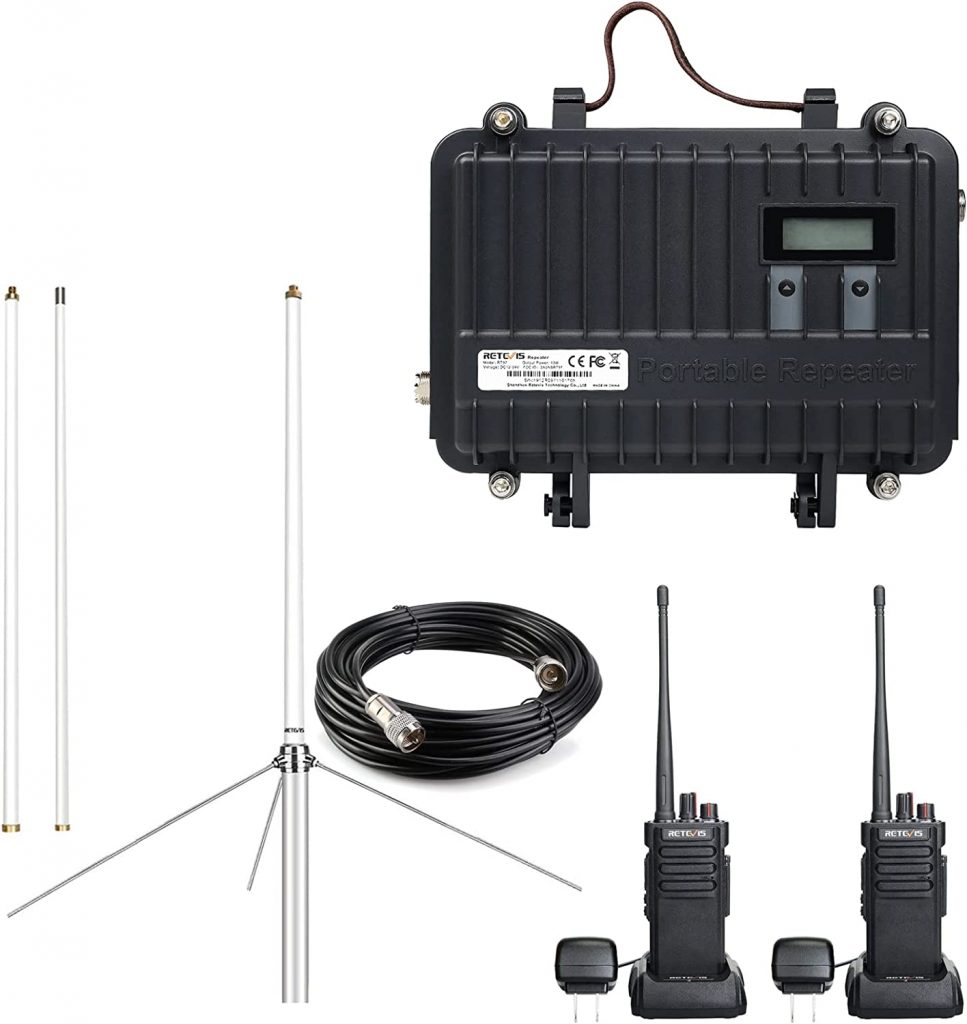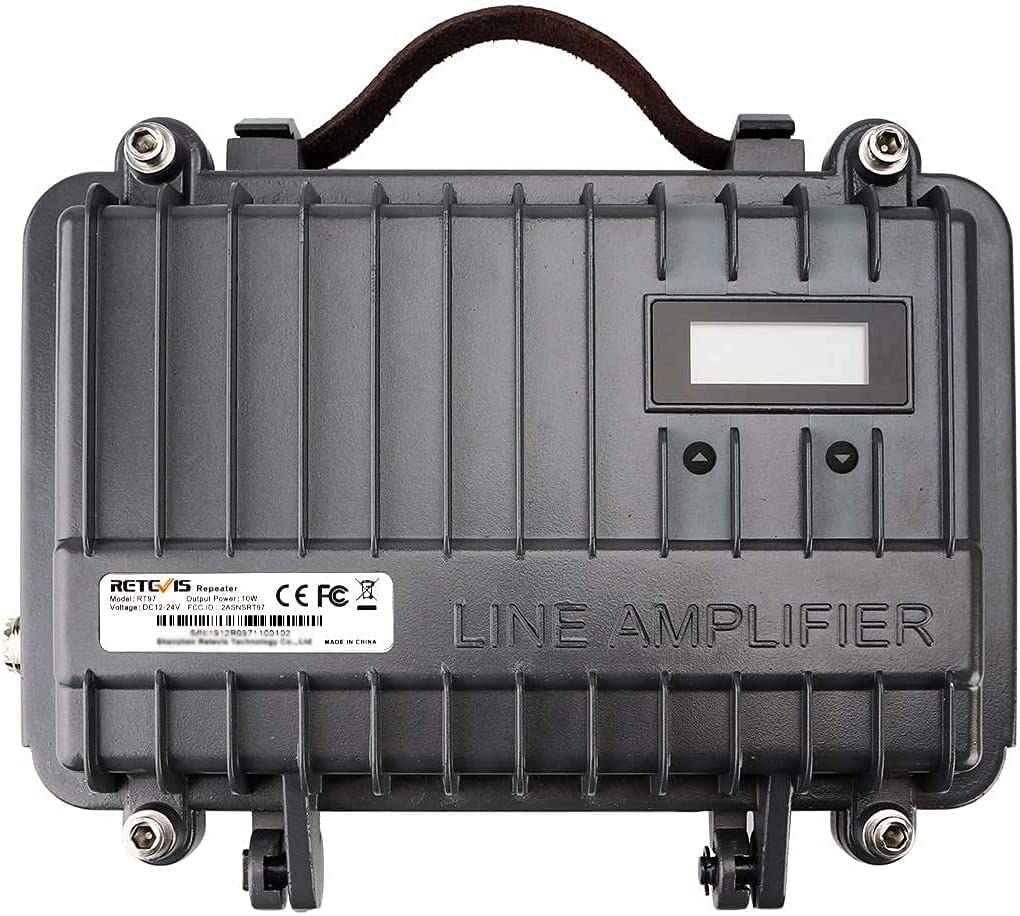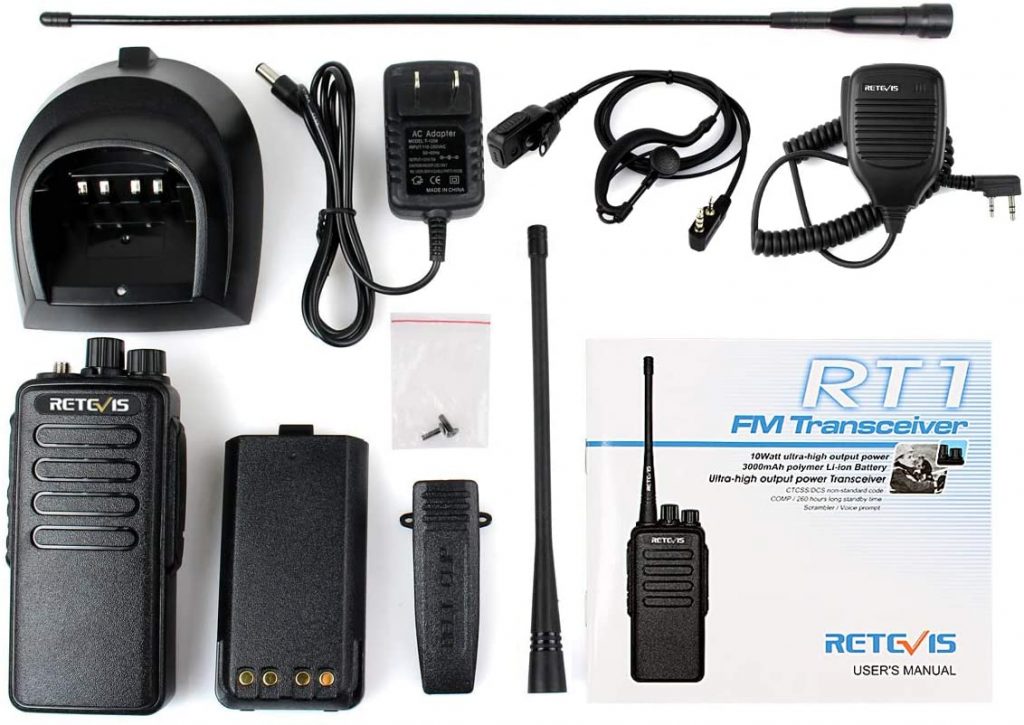Some residents in my neighborhood have been talking about both recreational and emergency communications for our area. Of course I recommended amateur radio (a.k.a. “Ham Radio”) as an ideal solution due to the extensive repeater network, availability of radios in all budget levels, etc.
The primary downsides of amateur radio for them was that each individual needed a license, and to get a license it meant studying and passing a test. So the next option I presented to them was the General Mobile Radio Service, or GMRS. While it still requires a license, there is no exam involved, and the license covers all members of an immediate family… which includes the kids, parents, etc. Currently the license fee is $70 but are soon dropping to $35 [the new $35 license fees have gone in to effect].
For the quick summary, GMRS is extremely similar to the Family Radio Servce, FRS, but has some nice differences. One big difference is that you can use more power, and even use radios with removable or external antennas. Both of those differences will increase the effective range of the radios.
The next biggest difference is that, similar to amateur radio, the use of repeaters is allowed. With a repeater located on a mountain top or higher location, individuals using handheld radios can talk to each other using that repeater as a relay. Where normally the mountain would block communications from a valley on one side to the other, now the repeater allows communications as long as each has line of site to the repeater’s antenna.
I’m no expert on GMRS repeater options, of course there are commercial repeaters that are adjusted to the GMRS frequencies and would definitely be the highest quality and most reliable options, it would also be the most expensive option.
So our neighborhood is going to build up a basic GMRS repeater as a test, we’ll learn a lot about the process, and make adjustments as needed. Most of the equipment we purchase would be used even after necessary repeater upgrades at a later time.
To start with, I recommended the Retevis RT97 GMRS Repeater, it claims 10-watts of output, but several comments mention the actual output is reduced due to the duplexer. The duplexer is what allows the repeater’s transmitter and receiver to operate using one single antenna instead of requiring two.
The antenna I recommended was the Comet Original CA-712EFC 460-470Mhz UHF Base Station Antenna since it covers the GMRS range and is a good, high gain, antenna. Knowing our repeater location might not be ideal, I wanted to get as much gain as possible, and this has a gain of 9dBi.
For antenna feed line I suggested they use MPD Digital LMR400-N-Male-PL259-100′ N Male to Silver Teflon PL-259 Connectors since LMR-400 will be lower loss on GMRS frequencies as opposed to some other feed line types. [Update: It has been pointed out to me that LMR-400 is not a good choice for duplex systems, such as repeaters. You can read more about that here and here.] The antenna has an N type connector, but the repeater has an SO-239, which requires the PL-259 on the end of the wire.
Amazon now has a Retevis RT97 Portable Radio Relay Kit which comes with the repeater, base station antenna, and two handhelds, so everything you would need in one package:

Due to thunderstorms in our area, I did add a XRDS-RF UHF Lightning Arrestor PL-259 to the system, so that required another short antenna feed line so I recommended a 10-foot length of MPD Digital RG-8U with UHF PL-259 Male Connectors. And of course that needs a ground rod so I recommended the Skywalker Signature Series Ground Rod, 4ft.
And if we have a functional repeater, we’d need some radios to talk to it with! With GMRS there are a variety of handheld and mobile radios that would work great, but to get started I recommended the Retevis RT1 Walkie Talkies with Earpiece and Mic,Long Range Heavy Duty Two Way Radios (5-pack)
If you have any experience building GMRS repeaters, I’d love to hear your thoughts on the proposed system listed above. If you have recommendations for any alternate products I’d love to hear about them! If we get this up and running I’ll post a follow-up on how it functions.


